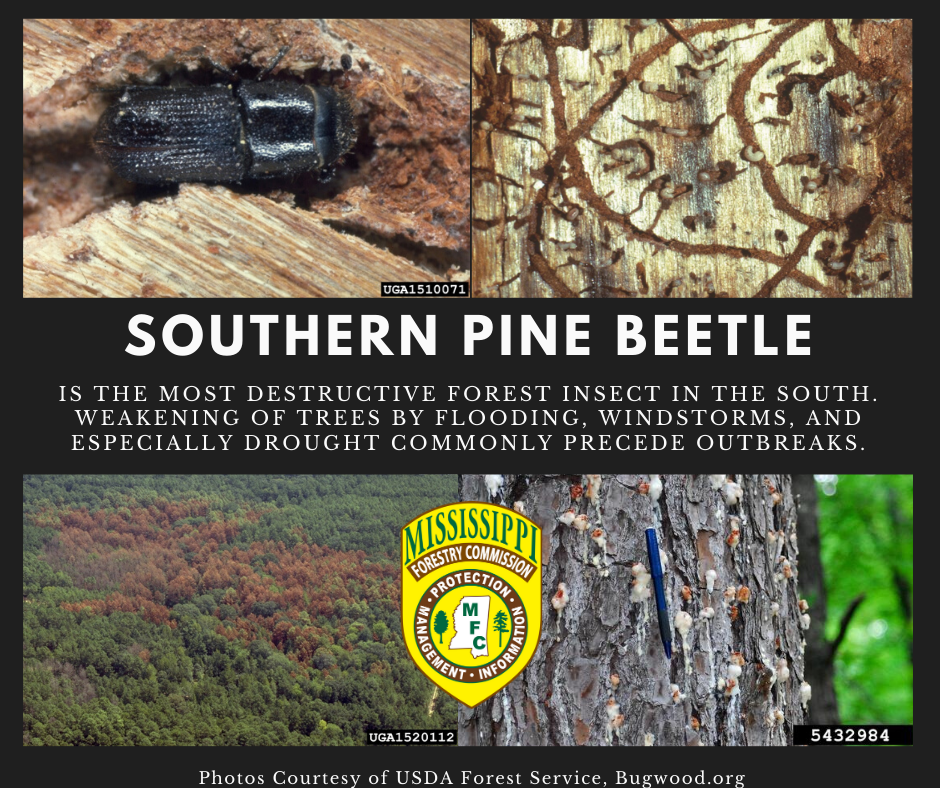MFC Southern Pine Beetle Activity Observation Outlook for Winter Months

To monitor forest health issues, such as the southern pine beetle, MFC sends out flights statewide each year in the spring and fall. The MFC actively monitors pine activity and conducts aerial land surveys. Due to increased activity due to the drought, MFC staff ramped up additional flights to assess the situation.
In several parts of the state, the MFC has heard from residents alarmed by the number of dying trees in their area. Some trees are stressed from the extreme drought conditions in recent months, but some issues could be due to forest pests native to Mississippi. MFC did observe a slight uptick in Southern Pine Beetle infestations in certain parts of the state, especially in the late summer/early fall.
The southern pine beetle (Dendroctonus frontalis), the most destructive forest insect in the South, targets weakened trees caused by flooding, windstorms, and especially drought. The good news is that the MFC Forest Health division has begun to see the number of new infestations level off. A decrease in activity is normal during late fall/winter and is most likely due to a change in the weather patterns where the state is experiencing cooler temperatures and an increase in rain.
Mississippi has two main types of forest pest beetles: Southern Pine Beetles and Ips beetles. It is important to differentiate between the southern pine beetles and the less aggressive Ips engraver beetles, which can be easily confused. The adult southern pine beetle is brown to black, approximately 1/8 inch long, and lacks spines on its posterior end, unlike Ips beetles. Female southern pine beetles lay small white eggs along the edges of galleries under the bark. The larvae, which are white with a reddish-brown head, reside beneath the bark of infested pines.
To help landowners identify and respond to infestations and outbreaks, the MFC advises the public to be aware of the signs. The first visible sign is typically the yellowing or browning of needles. Additionally, the trunk may exhibit white, yellow, or red-brown pitch tubes, approximately the size of a wad of gum. During droughts, pitch tubes may be very small or absent. Removing the bark will expose the distinctive winding “S” shaped gallery pattern.
If someone suspects a pine beetle infestation on their property, MFC urges them to contact their local forester for assistance. They can find the contact information for their local forester on the Mississippi Forestry Commission’s website. MFC also has a Southern Pine Beetle Prevention Program, which provides cost-share funds to encourage private forest landowners to thin their dense pine stand before the next southern pine beetle outbreak
For more information about the southern pine beetle, visit mfc.ms.gov/forest-health/
For information about the SPB Prevention Program, visit mfc.ms.gov/programs/invasive-species-programs/
For more information from the MSU Extension, visit https://bit.ly/3GmOZDC
